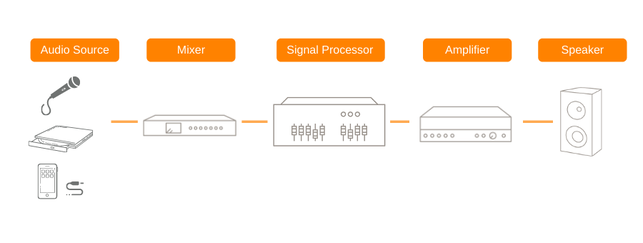What are the Effects of Background Music?
Sound Talks
What are the Effects of Background Music?

The Role of Background Music
Background music (BGM) is a mode of music to be played as a background in which the music is not intended to be a primary focus of potential listeners, but its content, genre and volume level are deliberately chosen to affect behavioural and emotional responses and is commonly placed in public areas such as retail sectors, restaurants, hotels and even elevators.
Major Effects
Background music can complement and assist in the following:
- Noise Masking in restaurants and cafes
- Privacy Protection in banks, public offices and meeting spaces
- Encouraging Customers to Remain Longer in retail stores and outlets
- Creating a Luxury Atmosphere at hotels, restaurants and stores
- Creating a Relaxing Atmosphere at hotels, restaurants and cafes
- Enhancing Mood at sports events and gymnasiums
- Calming Anxiety at hospitals and dentists
Sound Pressure Level
To achieve the right background music effect and in creating the desired atmosphere, it is important to consider the immediate surroundings.
Air-conditioners, machinery and even general conversation can impact on creating the perfect environment for BGM.
Therefore, volume settings are of paramount importance. The BGM should always be slightly higher than the surrounding ambient noise levels by at least 3 dB. However, this is just a general guideline and to maintain optimal performance where the ambient noise level varies, an automated ambient monitoring system can be used to ensure BGM levels are constantly 3 dB above ambient.

Basic Components for Background Music System
- Audio Source (e.g. Microphone, CD player, Smartphone)
- Mixer
- Signal Processor
- Power Amplifier
- Speaker

Type of Speaker
Speakers are roughly divided into two categories based on their shape and configuration.
Choose a speaker suitable for the design, configuration, size and it’s purpose.
Box speaker
Generally box speakers are placed on walls. The installation is relatively flexible by selecting suitable mounting brackets and pointing the speaker towards its desired target area. Ideally a distributed uniformed sound level needs to be achieved to avoid hot spots and dead spots. In places where ceilings are low, for example, the number of loudspeakers should be increased, while still maintaining the 3 dB above ambient rule.
Ceiling speaker
Ceiling speakers are a common favorite due to their discreet, antithetical design. However, a uniformed sound pattern still needs to be achieved. In the case of low ceilings where it is not possible to achieve this, a wide-dispersion speaker, such as the F-Series ceiling speaker, can be used. Because of its dynamic acoustic design, uniformed sound can be achieved over a much wider area.
- Support
- Sound Talks
-
What are the Effects of Background Music?